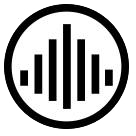About the album
Johann Sebastian Bach
Six Sonatas for Harpsichord and Violin, BWV 1014-1019
By departing in virtually every respect from the conventional model of the baroque trio sonata, Bach’s six sonatas for harpsichord and violin let both instruments participate equally in the unfolding of the thematic-motivic material. They establish a genuine dialog between the two performers as well and, thereby, actually pave the way for the classic duo sonata. The dialog between these two top musicians is equel and enchanting and the intimate nature of this recording draws the listener immediately in the music.
Bach’s violin sonatas, more properly called sonatas for harpsichord and violin, represent a closed set of six works and resemble in this way a number of similar instrumental work groups consisting of half a dozen pieces of the same kind. Take for example the six sonatas and partitas for unaccompanied violin, the six suites for cello solo, the six English Suites, or the six Brandenburg Concertos—to mention only a few. The concept Bach pursues in these work groups, however, does not aim at a cycle in the sense of a specific sequence in which the pieces are to be performed; it rather follows the principle of systematically exploring the manifold musical possibilities that can be realized in one and the same category of composition. Hence, the single works happen to form a whole, that is, a more or less closed set. If published it would constitute an “opus”, as Bach called the printed edition of his six keyboard partitas of 1731.
The most important feature of Bach’s violin sonatas consisted in their innovative scoring, an absolute novelty at the time of their origin and in many ways the prototype, on which the classical violin-piano sonata of a Mozart and Beethoven would be based. Even though the traditional elements of the Baroque trio sonata for two treble instruments and basso continuo can still be found in a number of movements or sections of movements where the violin and the right hand of the harpsichord form a duo structure over a bass fundament, the prevailing texture of the harpsichord part transcends the trio convention. In the six sonatas BWV 1014-19, the composer Bach single-handedly created a transformation of the genre of violin sonata.
De vernieuwende vioolsonates van Bach
De vioolsonates van Bach zouden eigenlijk beter sonates voor klavecimbel en viool genoemd kunnen worden. In de zes werken neemt Bach afstand van bijna elke conventie van de destijds gebruikelijke vorm van een baroksonate en laat in plaats daarvan beide instrumenten afwisselend op de voorgrond treden. Samen vormen de klavecimbel en de viool een oprechte dialoog waarin de luisteraar in de muziek wordt betrokken. Het was niet ongebruikelijk voor Bach om per zes werken te componeren. Neem bijvoorbeeld zijn zes partita’s voor viool, de zes cellosuites, de zes Engelse suites of de zes Brandenburg Concerten. Deze sets moeten echter niet gezien worden als cycli met een specifieke volgorde, maar als groepen waarin de muzikale mogelijkheden van deze instrumenten verkend worden en zo één geheel vormen.
Eén van de belangrijkste eigenschappen van de vioolsonates zit in de innovatieve notatie van de muziek, die een prototype vormden voor de klassieke viool-piano sonates van Mozart en Beethoven. Ondanks dat de traditionele elementen nog teruggevonden kunnen worden in een aantal delen, ontstijgt de klavecimbel de standaardbegeleidingen van de barokmuziek. In deze zes sonates transformeerde Bach het genre naar een nieuwe tijd.
De muziek wordt uitgevoerd door Catherine Manson op viool en Ton Koopman op klavecimbel. Catherine Manson. Manson geniet een uitgebreide carrière als soliste, kamermusicus en orkestleider. In 2006 werd ze benoemd tot orkestleider van het Amsterdam Baroque Orchestra. Ton Koopman is een internationale gerespecteerd specialist in barokmuziek en in het bijzonder J.S. Bach en Buxtehude.
Die Geburtsstunde der klassischen Duo-Sonate.
Weil Bach praktisch in allen Gesichtspunkten von der konventionellen Form der barocken Triosonate abweicht, ist es in seinen sechs Sonaten für Violine und Cembalo möglich, beide Instrumente bei der Entfaltung des thematisch-motivischen Materials gleichberechtigt teilhaben zu lassen. Auf diese Weise kann sich auch zwischen den beiden ausführenden Musikern ein echter Dialog entwickeln. Catherine Mason und Ton Koopman tun dies auf beispielhafte Weise.
Press
Ton Koopman's harpsichord playing, here matched by Catherine Manson in a likewise controlled and stylistically aware performance of the set, is always an inspiration – expresssive in sound an never dull or routine.
Early Music Review, 30-5-2013
From the very start of BWV 1014, you can feel that this highly disctinctive duo has a good sense of admiration for Bach's inventiveness
BBC Music Magazine, 01-2-2013
